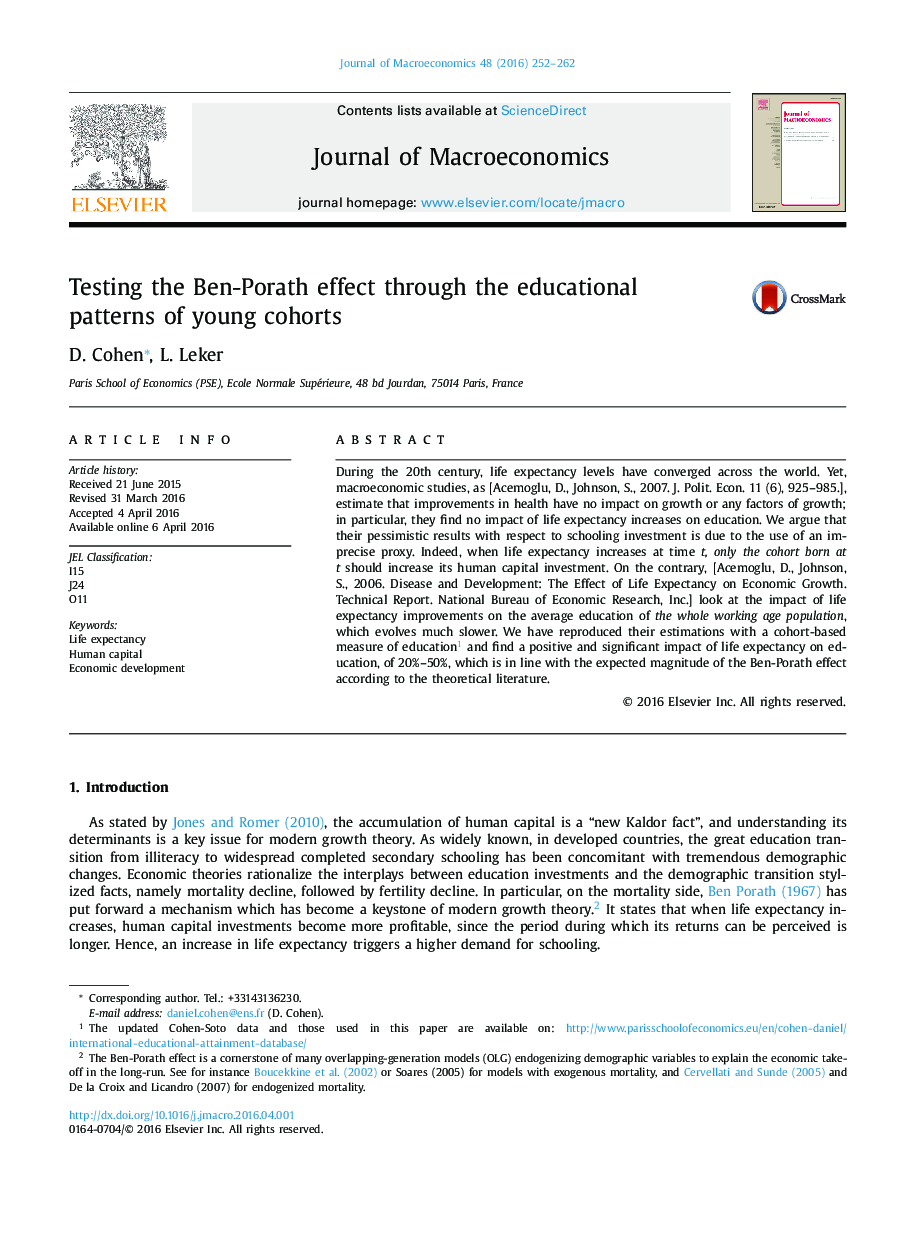| Article ID | Journal | Published Year | Pages | File Type |
|---|---|---|---|---|
| 965229 | Journal of Macroeconomics | 2016 | 11 Pages |
Abstract
During the 20th century, life expectancy levels have converged across the world. Yet, macroeconomic studies, as [Acemoglu, D., Johnson, S., 2007. J. Polit. Econ. 11 (6), 925-985.], estimate that improvements in health have no impact on growth or any factors of growth; in particular, they find no impact of life expectancy increases on education. We argue that their pessimistic results with respect to schooling investment is due to the use of an imprecise proxy. Indeed, when life expectancy increases at time t, only the cohort born at t should increase its human capital investment. On the contrary, [Acemoglu, D., Johnson, S., 2006. Disease and Development: The Effect of Life Expectancy on Economic Growth. Technical Report. National Bureau of Economic Research, Inc.] look at the impact of life expectancy improvements on the average education of the whole working age population, which evolves much slower. We have reproduced their estimations with a cohort-based measure of education1 and find a positive and significant impact of life expectancy on education, of 20%-50%, which is in line with the expected magnitude of the Ben-Porath effect according to the theoretical literature.
Related Topics
Social Sciences and Humanities
Economics, Econometrics and Finance
Economics and Econometrics
Authors
D. Cohen, L. Leker,
